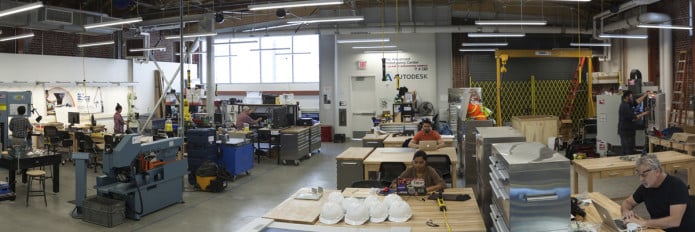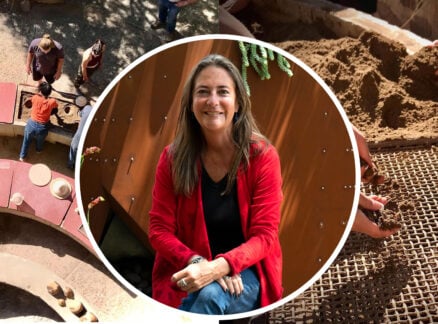
April 5, 2021
Addressing the Intersecting Challenges of Climate Change, Housing, and Social Equity
A partnership between the Rudy Bruner Award and Northeastern University, recent “Inspiring Design” sessions examined how inclusive places and practices build social capital to drive systemic change.

Recent sessions of the RBA/Northeastern University Myra Kraft Open Classroom Inspiring Design: Creating Beautiful, Just, and Inspiring Places in America series featured speakers from Boston, Dallas, Los Angeles, and New York City. They described how inclusive design can help build social infrastructure and capital, enabling communities to tackle big challenges such as climate change, responding to the COVID-19 pandemic, and homelessness. Their comments reinforced the value of visionary leadership, engaging and empowering people, and design thinking—all key themes from previous sessions on Planning Equity, Engaging Communities via Food and Education, and Building Equity with Housing and Parks.
In Fostering Innovative Civic Leadership, creators of the La Kretz Innovation Campus (2017 RBA Silver Medalist), a cleantech incubator and demonstration facility, discussed the role of civic collaboration and design in realizing the project’s ambitious vision. According to former COO Ben Stapleton (now USGBC-LA executive director), the facility is the first of its kind in the world to offer a closed-loop innovation system for developing, testing, and launching new clean technology products.

Alice Kimm, cofounding principal of John Friedman Alice Kimm Architects (JFAK), described the LEED Platinum and WELL Building Gold certified venue as a “living and breathing test bed” for green technology with its Los Angeles Cleantech Incubator and Advanced Prototyping Center open to building tenants and local members. The building’s light and airy interior fosters collaboration, creativity, and a sense of community among start-up businesses, nonprofit organizations, government, and area residents.
According to Kelli Bernard, former Deputy Mayor of Economic Development for the City of Los Angeles (now AECOM’s Chief Executive for the Los Angeles Metro Area), the project’s more-than-a-decade-long development involved two mayors and partnerships with major education and research institutions, the private sector, and public agencies, including the Los Angeles Water and Power Authority (LADWP), the nation’s largest publicly owned utility company.
As John Cleveland, Boston Green Ribbon Commission’s executive director observed, “Building social capital is a structural asset,” evinced through public private initiatives like La Kretz Innovation Campus, and is critical “to transforming urban systems to address climate change.”

In Creating Inclusive and Resilient Public Places, three leaders of design firms and initiatives that shape the public realm discussed the role of landscape and inclusive design practices in building social infrastructure.
Mikyoung Kim, founding principal of Mikyoung Kim Design, described landscape architects as “bridge builders,” who help to connect and amplify ideas, much as the bridge of a violin amplifies music. “When designers flex their engagement muscles through the process of listening, talking, and making with the community, they develop an emotional connection which makes for a better design,” she remarked.
Kaki Martin, principal of Klopfer Martin Design Group, described how engaging local artists and residents in the design process for The Steel Yard (2013 RBA Silver Medalist) in Providence, Rhode Island, created “a place for making and celebrating the arts that was community-built,” hosting “a stew” of activities and programming that have made the venue richer over time.

And Deborah Marton, executive director of the Van Alen Institute, shared how the nonprofit partnered with the Urban Design Forum and community-based organizations to create Neighborhoods Now, a program that leverages interdisciplinary expertise including design to help more than 100 New York City small businesses and cultural organizations respond to the COVID crisis.

In Ending Homelessness, architects Myriam Camargo, founding principal of CaCo Architecture; John Friedman, cofounding principal of JFAK Architects; and housing advocate Rosanne Haggerty emphasized the need for resources to help the homeless navigate the pathway from “street to home.” Haggerty explained how her experience developing over 3,000 units of supportive housing including The Times Square (1997 RBA Gold Medalist) in New York City prompted her shift from “building housing to building systems” to make homelessness rare and temporary. Now, as president and CEO of Community Solutions, she leads Built for Zero, a movement of 84 communities nationwide aligning resources to reduce the number of those chronically affected to reach functional zero.

Camargo described how The Bridge Homeless Recovery Center (2011 RBA Gold Medalist), a campus offering shelter and services in downtown Dallas, is emblematic of the city’s efforts to address homelessness in a meaningful way. Organized as a campus, the LEED Silver facility offers emergency and transitional housing, basic services, physical and mental health care, and coordinated care management to help guests build secure futures.
Friedman noted the general disconnect between what is offered and what is needed for the homeless and service providers. To fill the gap, his firm designed CD8 Navigation Center in South Los Angeles, providing information, job training, personal hygiene facilities, and storage for people experiencing homelessness; and created the nonprofit Open Source Homelessness Initiative, which collects and shares resources with architects, policymakers, and service providers. Friedman believes “innovation happens via collaboration, and good design has the power to uplift communities.”
Upcoming Inspiring Design Sessions:
- April 7 — Cultivating Creativity and Community with the Arts with Yerba Buena Gardens in San Francisco (1999 RBA Gold Medalist)
- April 14 — Planning for Equity with Millennium Park (2009 Silver Medalist) and Chicago Riverwalk (2017 RBA Silver Medalist) in Chicago
- April 21 — Lessons Learned featuring reflections and takeaways from the 14-week speaker series
Learn more and register here for free. AIA and ASLA CEUs are available.
You may also enjoy “Los Angeles’s Standard Plan Program for ADUs Takes Aim at the Housing Crisis”
Would you like to comment on this article? Send your thoughts to: [email protected]
Register here for Metropolis’s Think Tank Thursdays and hear what leading firms across North America are thinking and working on today.










